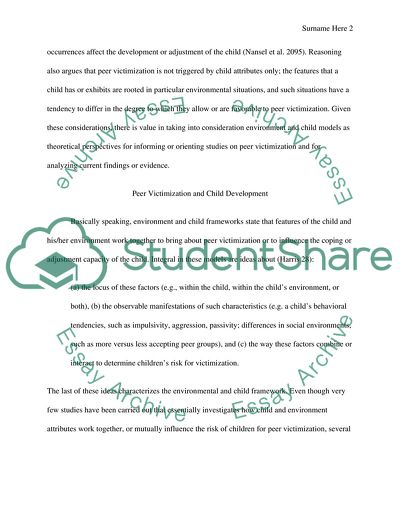Cite this document
(Impact of Peer Victimization on Normal Child Development Literature review Example | Topics and Well Written Essays - 2000 words, n.d.)
Impact of Peer Victimization on Normal Child Development Literature review Example | Topics and Well Written Essays - 2000 words. https://studentshare.org/sociology/1833858-any
Impact of Peer Victimization on Normal Child Development Literature review Example | Topics and Well Written Essays - 2000 words. https://studentshare.org/sociology/1833858-any
(Impact of Peer Victimization on Normal Child Development Literature Review Example | Topics and Well Written Essays - 2000 Words)
Impact of Peer Victimization on Normal Child Development Literature Review Example | Topics and Well Written Essays - 2000 Words. https://studentshare.org/sociology/1833858-any.
Impact of Peer Victimization on Normal Child Development Literature Review Example | Topics and Well Written Essays - 2000 Words. https://studentshare.org/sociology/1833858-any.
“Impact of Peer Victimization on Normal Child Development Literature Review Example | Topics and Well Written Essays - 2000 Words”. https://studentshare.org/sociology/1833858-any.


